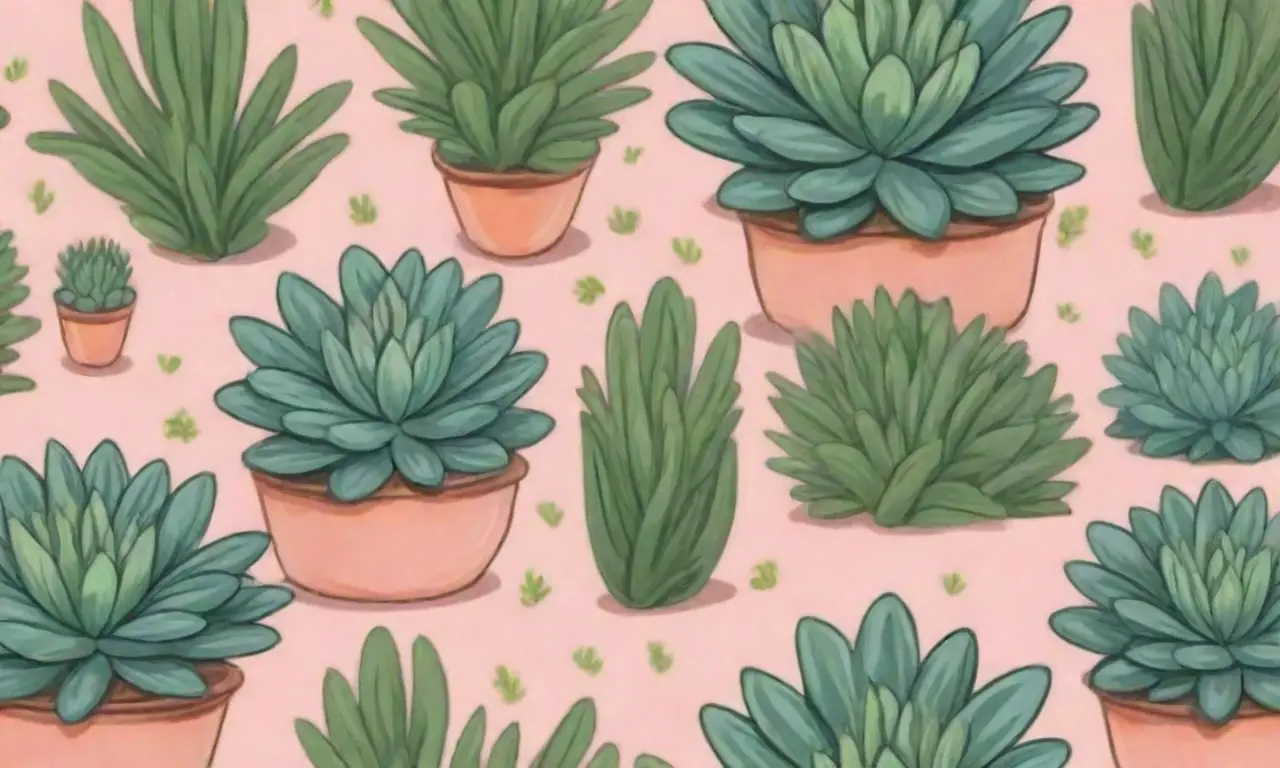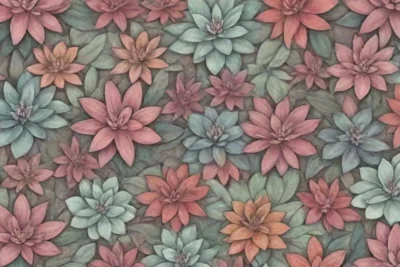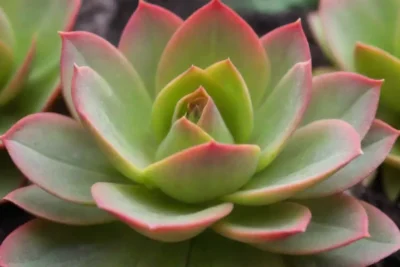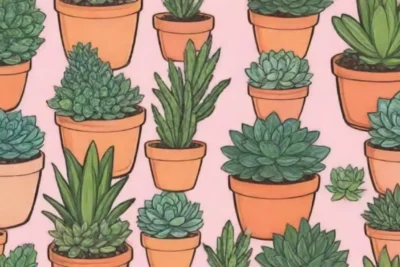
Spotlighting the Charming Donkey's Tail Succulent: Care Tips

Introduction
In the world of houseplants, few can match the delightful charm of succulents, particularly the Donkey's Tail (Sedum morganianum). This fascinating plant, recognized for its plump, teardrop-shaped leaves that cascade gracefully, offers both beauty and ease of care, making it a favorite among plant enthusiasts and beginners alike. With its striking appearance, the Donkey's Tail succulent has become increasingly popular, adding a unique touch to interior decor while requiring minimal maintenance.
In this article, we delve into the specific care tips and insights needed to cultivate a flourishing Donkey's Tail succulent. From light and watering needs to propagation methods and common challenges faced by caretakers, you’ll gain a comprehensive understanding of how to ensure that your charming Donkey's Tail thrives. Whether you're a seasoned succulent collector or a novice eager to start your plant journey, this guide will provide you with the essential knowledge to keep this captivating plant happy and healthy.
Understanding the Characteristics of the Donkey's Tail
The Donkey's Tail, also known by names like Burro's Tail, boasts a mesmerizing appearance that can draw the attention of anyone entering a room. Its trailing stems can grow up to two feet long, adorned with thick, fleshy leaves that range in color from vibrant green to a bluish tint. Each leaf, typically measuring about an inch long, resembles a tiny teardrop, creating a lush, dense appearance that works beautifully both in hanging planters and traditional pots.
Growth Habit and Climate Preferences
The growth habit of the Donkey's Tail is one of its defining features. As a trailing succulent, it showcases its beauty best in a suspended planter, where the stems can drape elegantly and exhibit their full potential. These plants are native to the temperate regions of Mexico, making them highly adaptable to various environments but most comfortable in warm and sunny conditions.
When it comes to climate preferences, the Donkey's Tail thrives in subtropical to warm temperate climates. It prefers daytime temperatures ranging from 70°F to 80°F, but it can tolerate slightly cooler conditions as long as there's no frost. Being a succulent, it has a low tolerance for excessive moisture, making well-draining soil and good air circulation essential for its health.
Unique Leaf Structure
What truly sets the Donkey's Tail apart are its unique leaves. The leaves are not only visually stunning but are specially designed to store water. This adaptation allows the plant to thrive in arid conditions where resources can be scarce. Their fleshy nature helps the plant combat drought, allowing it to remain hydrated during dry spells while making it prone to problems if overwatered.
Moreover, the leaves can also exhibit a stunning blueish hue when given optimal light exposure, particularly during the growing season. Under less-than-ideal conditions, they may lose their vibrant color, turning a duller shade of green. Understanding these characteristics is key to providing appropriate care for this beautiful succulent.
 The Fascinating Life of the Moonstone Plant: Tips and Care
The Fascinating Life of the Moonstone Plant: Tips and CareEssential Care Tips for a Thriving Donkey's Tail
Ideal Lighting Conditions
When it comes to caring for your Donkey's Tail, one of the most critical aspects is its lighting conditions. The plant prefers bright, indirect sunlight, making a south or east-facing window an excellent spot for it. However, it’s important to avoid excessive direct sunlight, especially during the hotter months of summer, as this can lead to leaf burn.
During the growing season, which typically runs from spring through early autumn, providing around 6 hours of indirect light each day will promote optimal growth. If you notice the plant elongating or leaning toward the light source, it's a sign that it may not be receiving enough light. To encourage a fuller appearance, consider rotating the plant occasionally for an even light distribution.
Watering Practices
Adhering to a correct watering schedule is paramount for the health of your Donkey's Tail. These succulents thrive in dry conditions, so overwatering is a common mistake made by caretakers. A general rule of thumb is to allow the soil to dry out completely before watering again. Depending on the environmental factors such as humidity, temperature, and potting mix, this may mean watering the plant once every two to three weeks.
When watering, take care to thoroughly saturate the soil without letting the plant sit in water. Excess moisture can lead to root rot, which is often irreversible. A well-draining pot with drainage holes is a great choice to ensure that water does not accumulate at the bottom.
Choosing the Right Soil
Selecting the right potting soil is crucial for the success of your Donkey's Tail. A well-draining, cactus or succulent mix is recommended, as it allows excess water to flow freely while retaining just enough moisture for the roots. Some gardeners prefer to create a custom blend, mixing regular potting soil with sand, perlite, or pumice in equal parts. This enhances drainage and aeration, making sure the roots can breathe.
Avoid using regular garden soil, as it holds too much moisture and lacks the aeration needed for succulents. Additionally, consider repotting your Donkey's Tail every couple of years to refresh the soil and provide room for growth, especially if you notice the roots becoming crowded.
Propagation of Donkey's Tail Succulents

 A Guide to Stunning Jade Plant Species and Their Requirements
A Guide to Stunning Jade Plant Species and Their RequirementsVarious Propagation Methods
One of the charming aspects of owning a Donkey's Tail is the ease with which it can be propagated. Propagation is the process of creating new plants from an existing one, and there are several effective methods for doing so. The most common methods include leaf cuttings and stem cuttings, both of which can yield successful results when carried out correctly.
To propagate through leaf cuttings, simply select a healthy leaf from the parent plant and gently twist it off. Place the leaf in a bright, warm area, allowing it to callous over for a few days before placing it on well-draining soil. Water sparingly until you see roots develop, at which point you can adjust your care regimen accordingly.
For stem cuttings, take a cutting of a healthy stem, making sure it has several leaves attached. Allow the cut end to callous over for a few days before planting it in the soil. Like leaf cuttings, keep the soil barely moist during the rooting process.
Timing and Seasonal Considerations
Timing your propagation efforts is crucial for success. The best time to propagate Donkey's Tail is during the growing season, typically in spring or early summer. During this period, the plant is actively growing, and the conditions are ideal for root development.
If attempted during the colder months, the plant’s growth may be stunted, and the cuttings will struggle to establish themselves. Providing a warm, stable environment along with adequate light will increase the chances of successful propagation.
Dealing with Common Challenges
Even experienced growers can face challenges when propagating succulents. One common issue is failure to root. If newly planted cuttings exhibit wilting or browning, it could be due to excessive watering, poor light conditions, or lack of humidity. It's essential to monitor the environment closely and make adjustments as needed. In cases where roots are slow to develop, consider placing cuttings in a humidity dome to create a more favorable microclimate.
Another common challenge is pest infestations. While Donkey's Tail is generally resistant to pests, it can occasionally suffer from aphids or mealybugs. Regular inspection of the plant will help you catch any infestations early on. Should you notice pests, treating them with a mild insecticidal soap or neem oil can be effective in protecting your succulent.
 Exploring the Small World of Miniature Succulents: Care Guide
Exploring the Small World of Miniature Succulents: Care GuideConclusion
Caring for the Donkey's Tail succulent is a rewarding experience that allows plant lovers to enjoy the beauty of nature within their homes. With its unique characteristics and charming appearance, it's no wonder that this succulent has captured the hearts of so many. By understanding its specific needs and providing optimal conditions, you can ensure a flourishing Donkey's Tail that brings joy and elegance to your living space.
Remember to pay special attention to factors like lighting, watering, and soil selection to create an environment where your succulent can thrive. Understanding propagation methods can also expand your collection and allow you to share the love of Donkey's Tail with friends and family. Embrace the journey of caring for this delightful member of the plant world, and you'll be rewarded with a beautiful display of cascading leaves that will brighten any room.
In conclusion, with the right knowledge and a bit of patience, your Donkey's Tail can thrive, bringing a touch of life and color to your surroundings. Happy planting!
If you want to read more articles similar to Spotlighting the Charming Donkey's Tail Succulent: Care Tips, you can visit the Popular succulent species category.






You Must Read